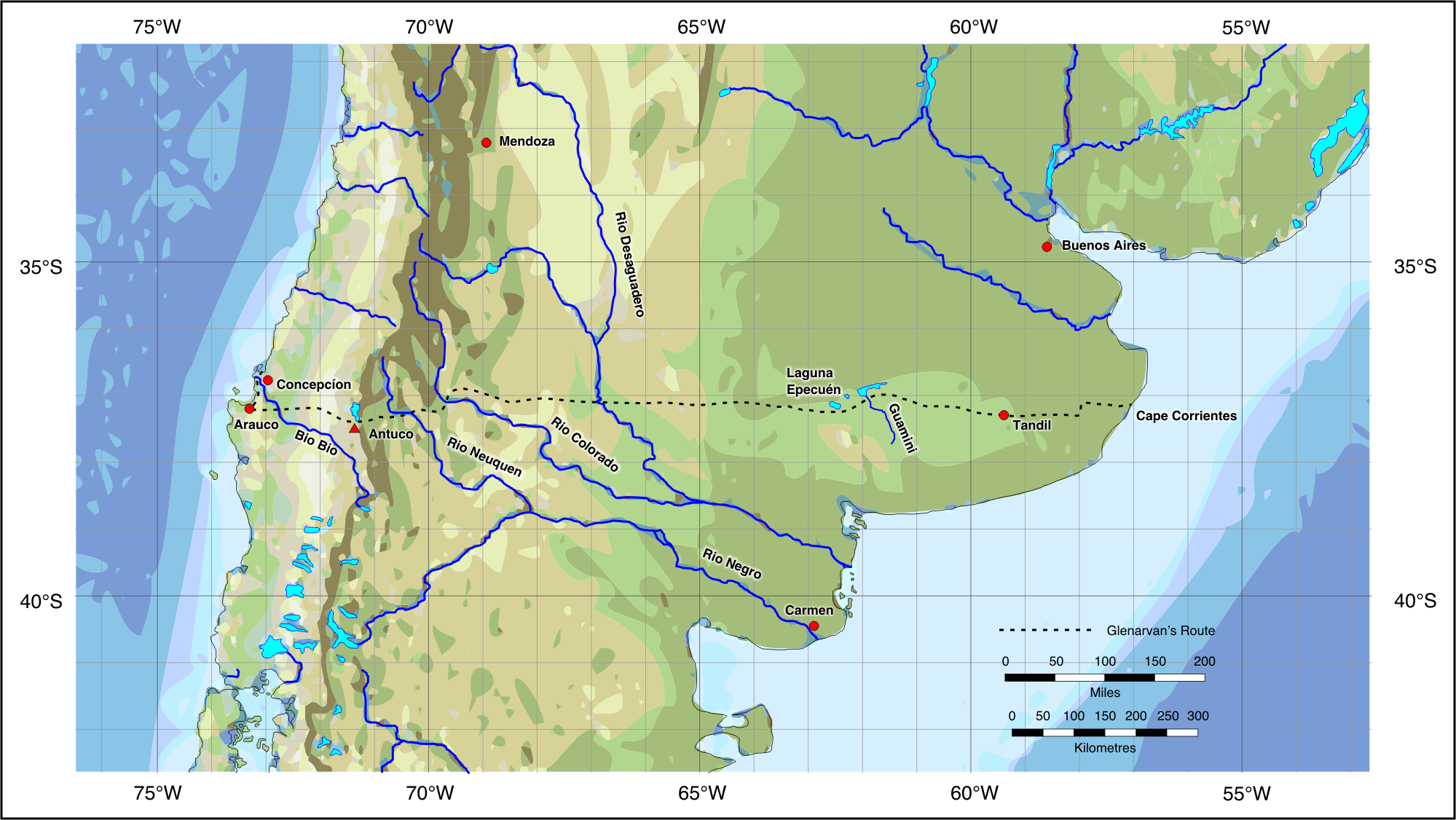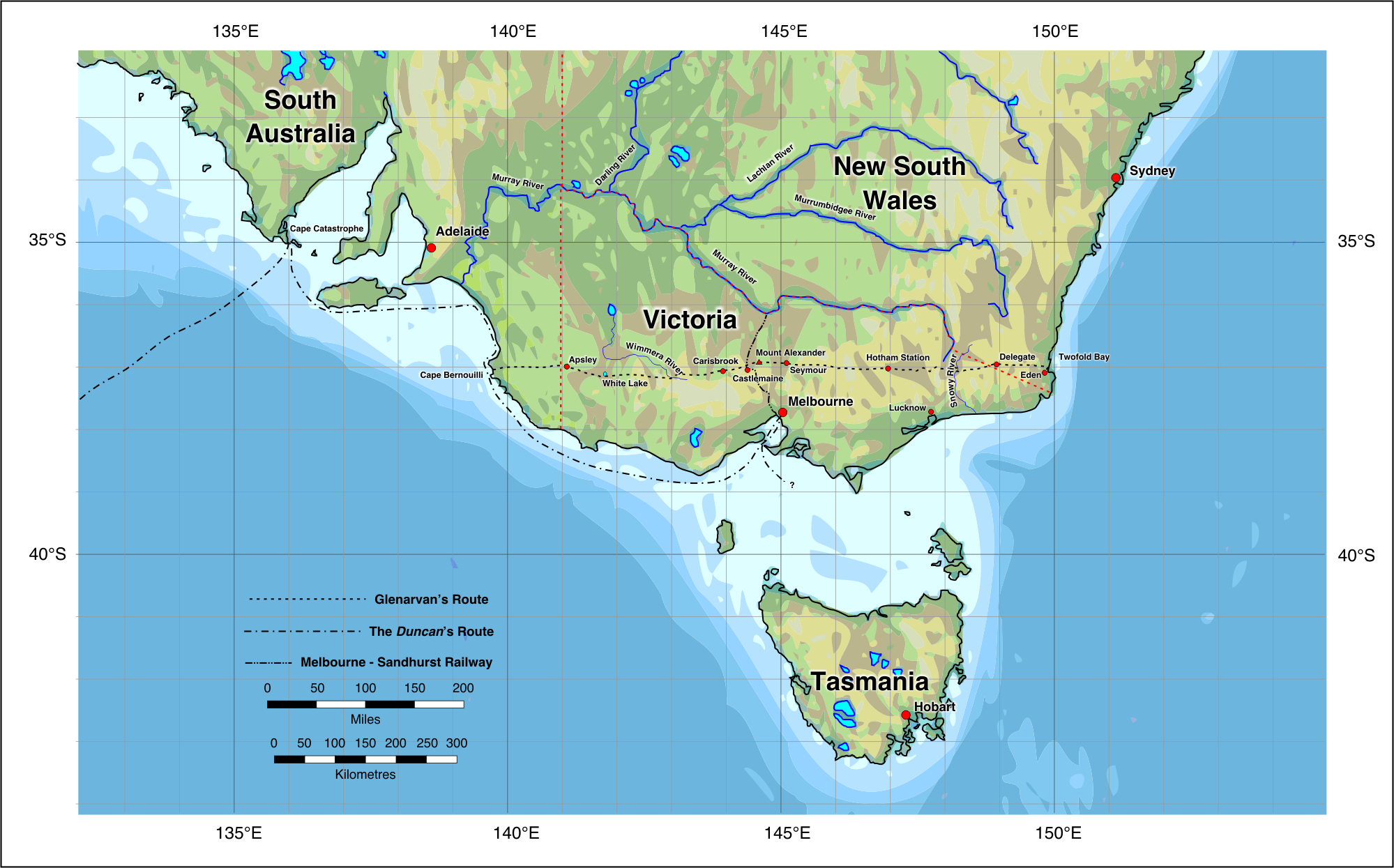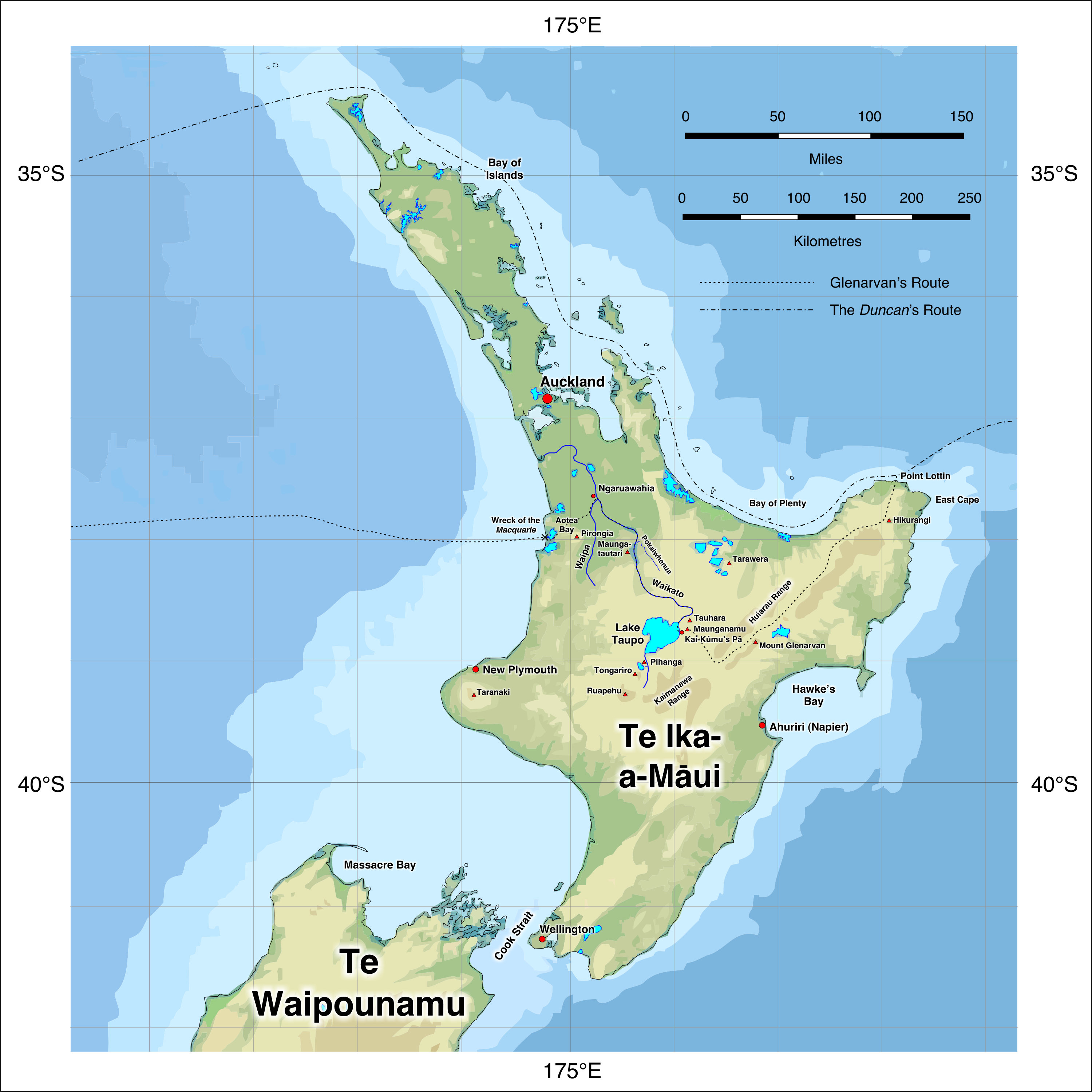

A Journey Around the World
In Search of the Castaways
An Extraordinary Voyage
by
Jules Verne
Illustrations by
Riou
An Unabridged English Translation © D.A. Sample
dsample@gmail.com

This work is licensed under a Creative Commons Attribution-NonCommercial 4.0 International License.
The licensor cannot revoke these freedoms as long as you follow the license terms.

I recently had occasion to compare the usual English translations available for Jules Verne’s Les enfants du capitaine Grant, commonly given the English title In Search of the Castaways, with its French original. I had heard that the public domain English editions of this book were highly abridged, but I hadn’t realized just how bad some of them were.
Entire swathes of text are missing. Much of Verne’s description of the wildlife, geography, and history of the places his searchers pass through is completely omitted, and the prose of the text is often stilted and awkwardly phrased. Google Translate often does a better job of producing nicely flowing English prose from the French source.
In Search of the Castaways is generally considered to be the first volume in Jules Verne’s Sea Trilogy, along with Twenty Thousand Leagues Under the Seas, and The Mysterious Island. Those volumes have already had unabridged English translations done for them, by F. P. Walter, and Sidney Kravitz. I believe that In Search of the Castaways deserved a similar treatment.
I have used multiple sources for this translation, all obtainable from Project Gutenberg, the Internet Archive, or Google Books. The first, and most important, is the original French text.
The next is the 1877 three volume Routledge edition, scans of which are available in the Internet Archive, and Google Books. The electronic text of these has been OCRed from the scans, but the first and third volumes don’t appear to have had any manual cleanup done on them, and the second volume still has a lot of OCR errors in it.
The volumes are:
This appears to be the most complete English translation available, and doesn’t suffer from the wholesale cuts that the other translations do. At least it has all the chapters. It’s primary failings tend to be in areas describing seamanship, and storms.
The next is the version published in 1874 by J.B.Lippincott & Co. This version has many wholesale cuts, but in the sections that haven’t been cut describing sailing, and storms at sea, it tends to be better than the Routledge.
Another English translation is the 1911 version by Charles Francis Horne. This seems to be the most common English version out there (as is evident from its low Gutenberg number) and is usually the top hit that any internet search will get you. This is unfortunate, as this book appears to be a much abridged version of the Routledge edition.
Another important resource for any Jules Verne fan is Zvi Har’El’s Jules Verne Collection. This is, among other things, where I got all of the illustrations from the original Hetzel edition, that I am including in this book
My French sucks. As a Canadian I have been exposed to it for much of my life and know a few phrases, but I can’t pretend be able to carry on any sort of conversation in it, or read anything complicated, so I relied on Google Translate a lot when creating this. My basic process is to start with the Google translation from the French original, and then start editing it, cleaning up the prose, and fixing things that it gets wrong, referencing the other English translations where I have difficulties figuring out what the heck Verne was trying to say. (And I sometimes discover that the earlier English translators had problems with exactly the same passages.) My first pass through a chapter is mainly just restoring all the bits that got cut out, with the primary goal being complete, not especially well polished prose. Translating each chapter will also often involve trips down the Wikipedia rabbit hole, researching various animals, plants, or historical events and people that Verne mentions. As he was writing in the nineteenth century, he sometimes uses words, or names for things and places that have gone out of use, or obsolete spelling. I also spend a lot of time in Google Earth, reviewing his geography.
When I came to the Māori in the New Zealand section of the book I made extensive use of Kendall and Lee’s A Grammar and Vocabulary of the Language of New Zealand,1 first published in 1820. Verne himself appears to have used a version of this book as a reference, for I’ve been able to find just about every word or phrase he uses in it. (Though he seems to have modified many of the spellings, to conform with French phonetic rules.) It was also the reference book Dumont D’Urville used when he was visiting New Zealand in 1827, an event which Verne references multiple times.
My primary goal in creating this is completeness. I want there to be a complete version of this book available for English readers. The second is readability. I am endeavouring to produce good English prose.
How well I accomplish the first is something that can be judged fairly objectively. The second, not so much, but I hope that I am producing something that people will enjoy reading.
As I progress, I am marking the text to indicate what I have done. Sections that were present in the English translations I used for reference are unadorned. Sections that I have restored from the French original are highlighted like this. These sections are much more prevalent in the South America section, as I hadn’t yet found the Routledge version when I did it. Anything I have added myself (generally footnotes, Verne liked his footnotes, so I continue the practice) is highlighted like this. The few changes I felt compelled to make are highlighted like this.
When it comes to actual changes, I am trying to be very sparing with them. The first is a minor tweak to the section on the interpretation of the English, German and French documents in chapter two. Verne’s characters are Scottish, but Verne was French, writing in French, for a French audience, so he has them do their reconstruction of the message in the bottle in French, despite it having been created by English speakers as well. I have them working in English, and make a couple of minor adjustments to the legible fragments of the English document, to make it look more like something a native English speaker would write. (This is something I had to keep going back to, as the multiple re-interpretations of the document made the first changes I made incompatible with later interpretations.)
Where Verne, speaking in his authorial voice, imparts a bit of history that didn’t match up with my research, I put in the more current understanding of the events described, and footnote the changes. If it is one of Verne’s characters (usually Paganel) who is imparting what I consider to be incorrect information, I generally leave it unchanged, but again add some footnotes.
Many of my changes are to details of geography that are not correct. The Hetzel edition has footnotes that give metric conversions of English measurements stated by the characters, but sometimes the conversions don’t match. Verne sometimes puts geographic features in the wrong places, or gives incorrect distances. I have tried to adjust all numbers to be consistant with reality. Sometimes when Verne puts something in the wrong place, I will substitute the place name with something which is close to where Verne said it was.
I have found a couple of continuity errors, which I have tried to correct. (For example, Verne’s characters start their trek across Australia with a wagon being pulled by six oxen. About ¾ of the way across, two of them just disappear, without any reference to what happened to them.)
Jules Verne was a nineteenth century man, and sometimes it shows. While he was progressive, for his time, some of his word choices, and attitudes toward issues such as race, are … problematic … for many modern readers. While he doesn’t treat all non-Europeans as somehow lesser people (Indeed, if there is one race that gets dumped on a lot, it’s the Anglo-Saxons. Verne’s main characters are all Scottish and French, and none of them much like the English) Verne did think that race is important, and that “pure” races are superiour to “mixed” races. While I haven’t removed this completely from the book, I have toned it down, a bit, by changing, or omitting, some adjectives.
But when it came to his descriptions of the Australian Aborigines, I was sorely tempted to give them a major rewrite. Instead I just added a bunch of annotations about some of what Verne was getting wrong. And I didn’t relegate those annotations to the footnotes.
I also gave Thaouka a sex change. The first time Google gave me a pronoun when talking about her, it was feminine, so I went back and added “mare” to my initial description of her. After coming across a few “him”s and “he”s in further descriptions of the horse, I figured that Google had messed up that first one, but I thought that the book could use some female representation in that section, so I went with it. And really, that trip across the Pampas would have gone much smoother for them if they’d paid more attention to that horse.
I’d like to thank James D. Keeline for his help, especially in pointing me to the online versions of the Routledge editions. I’d also like to thank the members of the Jules Verne Forum for their help with some of the trickier bits of translation.
1. Kendall, Thomas; Lee, Samuel. A Grammar and Vocabulary of the Language of New Zealand. London: Church Missionary Society, 1820

The searcher’s route across Chile and Argentina at the 37th parallel

The searcher’s route across Australia at the 37th parallel

The searcher’s route across New Zealand